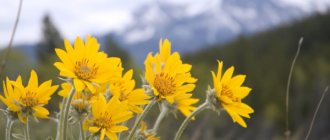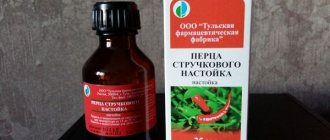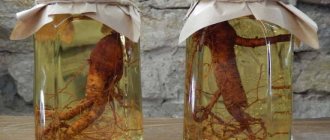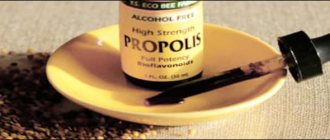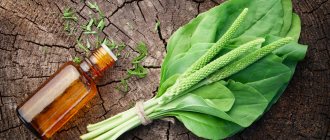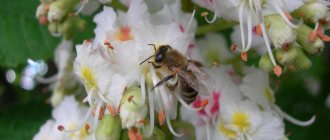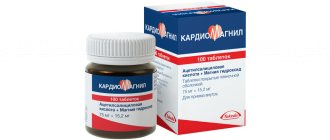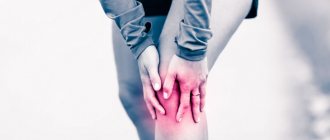Mountain arnica has been known for its medicinal properties since the 11th century. The doctor Dioscorides from Ancient Greece called it a sneezing flower, since flower baskets and leaves provoke sneezing. Healers of those times used the healing properties of the plant to relieve inflammation of the skin and heal wounds of soldiers, as well as ordinary people. Today, in addition to medicine, people use the plant in various spheres of their life.
In the article you will learn where exactly the mountain arnica plant found its use, what healing qualities it has, how to prepare it correctly, and under what conditions it should be stored.
Arnica mountain photo
Description of the plant
Mountain arnica (Arnica montana) is a perennial asteraceous plant, which is popularly known as: mountain mutton, Midsummer, lamb's flower, hare's cabbage, lamb's grass.
The stem grows up to 60 cm, is hard, herbaceous, pubescent, on which small leaves are located. At the top of the stem there are yellow baskets, the diameter of which does not exceed 5 cm. The root system consists of a thick rhizome, as well as numerous thin roots.
The flowering period, which occurs approximately in June-July, is about 10 days. Reproduction occurs by seeds and division of the rhizome.
Growing on site
Mountain arnica is demanding on soil fertility and moisture . It grows mainly on acidic meadow and forest soils. It is light-loving and is not found under tree canopy.
Growing mountain arnica in the Non-Black Earth zone encounters certain difficulties - the plant does not overwinter well and suffers from getting wet and dampened under the snow. More promising are arnica foliaceus and arnica Chamisso. For them, it is preferable to choose areas with high soil fertility and free from perennial weeds. Areas with heavy, floating soils and stagnant moisture in the spring are unsuitable. This may cause the plants to get wet. Too acidic soils are also unsuitable; a slightly acidic or neutral reaction environment is optimal. Arnica is demanding of moisture, so during drought there is a severe shortage of yield, the duration of flowering is sharply reduced, the number of flowers on the inflorescence and their diameter decreases. The soil is dug up in the fall, carefully selecting rhizome and root shoot weeds. At the same time, add 2-3 buckets of compost per 1 m2.
Reproduction
Arnica can be propagated vegetatively by seeds or pieces of rhizomes.
Seeds do not require preliminary preparation. They are sown in early spring. The width between the rows is 50-60 cm, the planting depth is 1-1.5 cm. Under favorable weather conditions, seedlings appear in 2-3 weeks.
through seedlings is more effective, although more labor-intensive . In this case, the seeds are sown in a pot on the windowsill 2.5 months before the intended planting in the ground. Plants are severely affected by blackleg. Seedlings are planted in early June, always with simultaneous watering.
If planting material is available, it is convenient to propagate arnica vegetatively . It is better to select rhizomes at the beginning of regrowth, when the length of the shoot reaches 5-7 cm. Planting pattern - 25 x 25-30 cm. Selected rhizomes are poorly stored, so they are dug up as needed and planted immediately.
Care
In the first year of life, it includes 3-4 weedings (especially on crops), inter-row loosening. Advice. Arnica will look good in a mixborder (preferably leafy) and in a rocky garden (especially mountain).
Arnica: chemical composition
The main active ingredient due to which the flower has healing properties is arnicin, its amount is 4%. Arnicine consists of arnidenediol, isoarnidiol, and lutein. Additionally, the plant contains:
- resinous and tannin elements (5%);
- vitamins C, B4;
- volatile oily liquids;
- trimethyl derivative of glycine;
- nitrogen-containing organic compounds;
- plant sterols;
- helenin;
- gum;
- sugars, glycans;
- organic acids.
Active ingredients
The inflorescences contain up to 4% of the coloring substance - arnicine, consisting of a mixture of three compounds: arnidiol (arnidendiol), faradiol (isoarnidiol) and saturated hydrocarbon.
Arnifoline, an ester of sesquiterpene oxyketolactone and tiglinic acid, carotenoids, choline, betaine, cynarin (tridipside of caffeic and chlorogenic acids), essential oil (0.04-0.07%), were isolated from the leaves and heads of arnica montana and arnica foliose. which is a dark red or blue-green oily mass. Fatty oil and the red dye lutein are also isolated from the flowers. Organic acids were discovered: fumaric, malic and lactic, both in a free state and in the form of calcium and potassium salts. Ascorbic acid contains 21 mg/%. Fructose (2.5%), other sugars (0.5%), sucrose (1%), inulin, tannins, proteins, chlorophyll and various ballast substances were found in arnica flowers. The inflorescences contain about 5% tannins, as well as cynarine (0.05%), choline, and alkaloids.
Distribution and use of arnica
Mountain Arnica grows in the following areas: the European continent, the Carpathians, the Baltic states, and the Republic of Belarus. In the Alps, lamb grass grows at an altitude of 2.8 km above sea level. Also, the places where it grows can be pine forests, forest edges, clearings, meadows on peat-humus soils.
Growth of mountain arnica
The plant is used to treat and prevent certain diseases, in the manufacture of medicines and for cosmetic procedures.
Traditional medicine uses lamb grass for colds, diseases of the cardiovascular system, and headaches. Use a healing tincture of mountain arnica to stop bleeding.
Traditional medicine uses arnica to produce medicines:
- Arnica ointment dr. Taissa, which is used to treat burns, sprains, bruises, injuries;
- pepper patch helps with radiculitis and colds;
- an alcohol-containing tincture is consumed for bleeding associated with gynecology (uterine fibroids, after childbirth and abortion).
Mountain arnica is useful for angina pectoris, dysfunction of the digestive system, increased blood pressure, the formation of stones in the kidneys and urinary system, acute tonsillitis, gingivitis, and as a choleretic drug.
Modern homeopathy uses mountain sheep to prepare medicines. It is added to make ointments, oils, tablets, gels, and drops.
Cosmetology uses the plant to make decorative cosmetics, hair care products, and massage oils.
Arnica montana is used in folk, traditional and modern medicine
Homemade Arnica Remedies
The use of arnica is effective for inflammation of the ovaries, heavy menstruation, uterine bleeding, fibroids, inflammatory processes in the uterus, fibroids. To do this, prepare an infusion from the plant: 1 tablespoon of flowers is poured with 1 glass of boiling water and infused for 4 hours. Take 50 ml up to 4 times a day. This infusion can be used externally as a lotion for joint injuries and extensive bruises. In the first 3 days after injury, cold infusions of arnica are used, subsequently warm ones.
To obtain an infusion used as a hemostatic and choleretic agent, 1 tablespoon of arnica flowers should be placed in an enamel bowl, pour 1 glass of boiling water and simmer under a closed lid for 15 minutes in a water bath. After an hour, the infusion is brought to a volume of 200 ml with boiled water. Take 1 tablespoon diluted in milk three times a day after meals.
For various inflammations of the mouth and throat (pharyngitis, sore throat, periodontal disease and stomatitis), rinses are used, for which 3 teaspoons of arnica flowers are poured into 2 cups of boiling water and left for 2 hours. It is effective to carry out procedures up to 5 times a day.
Arnica: medicinal properties and harm
Due to its diverse chemical composition, lamb has a large number of medicinal properties:
- tonic (with a large dosage of infusion);
- soothing (with a small dosage of infusion);
- stimulating;
- hemostatic;
- therapeutic;
- choleretic;
- disinfectant;
- anti-inflammatory;
- antiparasitic;
- wound healing.
Medicines that include arnica strengthen blood vessels, normalize heart rate, eliminate the development of malignant tumors, and relieve muscle pain after surgery.
Due to the toxicity of the plant, arnica should be taken with caution and not exceeding the dosage. Arnica is contraindicated for expectant and nursing mothers, children under three years of age, if there are allergic reactions to the components.
The consequences of an overdose are abdominal pain, nausea, vomiting, and loss of strength.
Contraindications
Healing mountain arnica can cause not only benefits, but also harm. It is necessary to refuse to use the plant:
- for individual allergies;
- with increased blood clotting;
- for chronic constipation;
- during pregnancy and lactation.
When treating with a useful plant, you must carefully follow the prescription dosage. In excess quantities, mountain arnica causes side effects. When used externally it is a burning sensation, rash, redness and itching, and when used internally it is nausea, vomiting, shortness of breath, leg cramps and increased sweating. If such symptoms appear, you should immediately stop taking the plant and consult a doctor to prevent serious complications.
Collection, preparation and storage of mountain arnica
The healing qualities of arnica are contained in the flowers. The collection of flower baskets begins during flowering, this period occurs in June-July. The preparation of medicinal raw materials is carried out in dry weather, after the dew has disappeared.
Drying is done quickly, not in the sun. The herb is not stirred to preserve the integrity of the fragile flower.
The dried plant should be stored in a cool, dark place. Mountain arnica, as can be seen from the description, has toxic properties, for this reason the storage time should be no more than two years.
The preparation of medicinal raw materials is carried out in dry weather, after the dew has disappeared.
Medicinal raw materials
Three types of arnica are used for medicinal purposes: arnica montana, arnica Chamisso and arnica foliage. Medically, the last two types of arnica act similarly to mountain arnica. All three species are cultivated, but it is easier to grow Shamisso and foliage arnica. The main places for harvesting wild arnica are the western regions of Ukraine. Flower baskets with stems (no more than 1 cm) are collected by hand at the beginning of flowering in the 2-3rd decade of June. Sometimes inexperienced pickers harvest British elecampane instead of arnica. It is distinguished by the absence of rosette leaves, alternate stem leaves with one vein and smaller baskets with a diameter of 2.5-3.5 cm, collected in corymbs. In homeopathy, the whole plant is used, harvested during flowering.
Dry quickly, spreading it in a thin layer on paper or fabric, in attics, sheds, under sheds or in dryers at a temperature not exceeding 50-60 ° C. The shelf life of raw materials is 2 years.
Indications for use
It is recommended to use mountain arnica tincture if there are gynecological indications. Thanks to the drug, you can stop bleeding after childbirth or abortion. Flower extract is prescribed to patients with uterine fibroids. The use of preparations containing plant extract can eliminate problems with the menstrual cycle. Arnica can lower blood pressure, which is important for hypertension.
- It is necessary to take the flower tincture internally for the following problems:
- bruising due to concussion;
- bleeding into the retina of the eyes;
- pain in joints and muscles;
- acute infections that are accompanied by severe bleeding (rheumatism, typhus, etc.);
- vasculitis;
- arthritis;
- cerebral hemorrhages;
- cholecystitis.
Cream by age: what should you know when choosing a cream?
Many girls are faced with the need to regularly take care of their skin at a very young age (12-14 years old).
And from now on, their immersion into the world of cosmetology begins, which is often full of contradictions. However, everyone knows very well that it is impossible to do without such a basic skin care product as cream. Today on store shelves you can find a huge number of different creams: for problematic and dry skin, moisturizing, nourishing, tightening and many others. This choice makes my eyes wide open! Therefore, it is important to know which cream is suitable for your skin and matches your age.
Let's figure out what you need to know to choose the right cream according to your age and skin needs.
Up to 30 years old
At this young age, the skin usually requires the use of cream to moisturize and protect against external factors. Even oily and combination skin needs hydration, the only difference is in the components of the cream that will perform this function.
In creams for dry skin, the ingredients are more nourishing , and for oily skin , they are aimed at mattifying and lightly moisturizing , without the effect of a greasy film.
Don't neglect hydration! Lack of moisture reduces the skin's natural protection, and it ages faster. However, do not be tempted by creams marked 30+! If you are still a year or two away from this date, then choose a cream according to your age. Do not hurry.
In the PURE LINE product collection for young skin, the Ideal Skin line was created.
Use at home
Most often, a tincture with alcohol is prepared at home. To create it, finely chop 100 g of arnica flowers and pour 1000 ml of alcohol (70% strength) into them. Cover the container with a lid and place in a dark, dry place. After 2 weeks, strain and consume 45 drops with water or milk. The tincture should be used twice a day for 2 weeks. It helps remove toxins from the blood and improve immunity. This tincture can also be used externally if you have bruises or abrasions.
For diseases of the oral cavity, in particular for periodontal disease, use a tincture of arnica, eucalyptus and calendula flowers mixed in equal proportions. Apply the prepared mixture to the affected areas of the gums.
